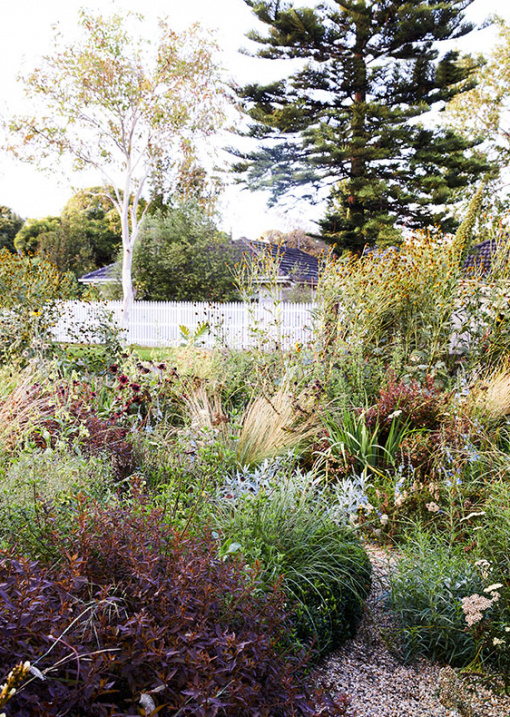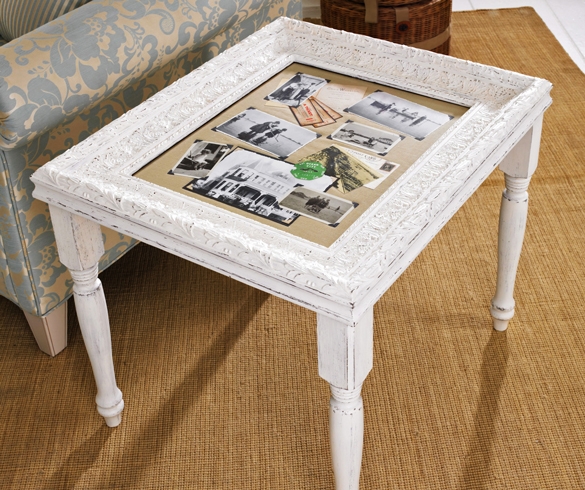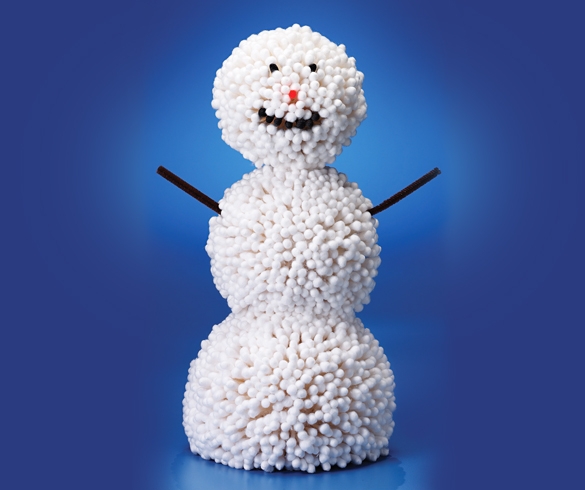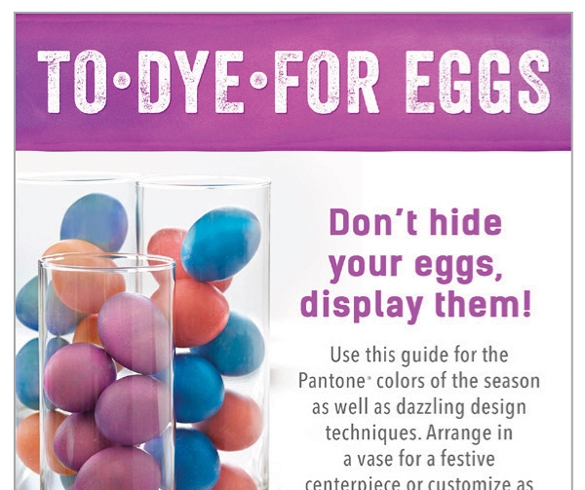‘This is the first house and garden I’ve owned,’ Jac Semmler tells me. ‘Renting never stopped me from gardening – I’ve dragged perennials and pots to different places over the years – but being able to cultivate my own home garden is an utter delight!’ Jac is a mad plant woman in the very best kind of way. She’s a horticulturist and works at The Diggers Club as the Ornamental Category Manager, and her home garden in Frankston is her botanical laboratory.
Jac, her partner Matt and dog Peg moved to the property around two years ago. A 500 square metre block with a 400 square metre garden and Jac was sold. She immediately got to work, digging up lawn and concrete and soon enough the ‘crazy plant lady garden’ in the front yard was attracting neighbourhood interest. ‘I’ve been surprised to have lots of neighbours, who are not gardeners at all, come over and tell me how much they like it. They love it because it’s always changing, it’s interesting and a bit of an adventure. And, they can see I’m having a lot of fun!’
Jac and I are both new-ish home gardeners, having both rented for years previously. It seems we’ve followed a similar path of mad excitement, dubious decisions and wild experimentation in our respective patches. ‘I’ve been a bit naughty’, Jac confesses. ‘As soon as we moved in I just dumped everything everywhere, and now I’m finding I need to do a bit of cheeky replanting.’ Same here.
‘When I first moved in, I said “Great! I’ll do a design for the garden.” I did, but it’s gone out the window.’ Same here. I know the rules but I continue to break them. I can’t help it. ‘That’s the great thing about having your own garden. You can push boundaries and have a lot more freedom. It’s so much fun’, says Jac, attempting to console me. I feel better already.
‘We live in a society where everything is supposed to happen instantly. For me, a garden is a relationship. It’s OK to mess up, it’s OK to make mistakes. Sometimes plants die and they die for everyone. They die for me. We don’t get it right all the time, but in the little moments when we do, it’s joyful. Gardening is both a science and an art – you can learn the science but the art, I think, is in the approach. I’m a bit freeform.’
Jac grew up on a farm in central Victoria and comes from a lineage of tough country gardener women. She worked in outdoor education for many years – living in remote and beautiful parts of Australia like the Victorian alps and Alice Springs – before realising horticulture was her calling. After studying at South Australia TAFE in Adelaide, she began working for the Diggers Club. It was here where her love for and knowledge of perennial plants began to flourish. There is no turning back.
In her home garden, Jac has tried to create a planting that speaks of place. ‘I’m trying to create a garden of whimsy, texture and randomness, whilst still having a sense of belonging’ she says. She’s achieved this primarily through planting perennials, augmented by Australian native plants. Jac is not fussed by where a plant comes from, but how well it grows, and how it makes her feel – she’s all about growing ‘plants of the heart’.
Jac’s garden is only a couple of years old, and Jac has only been gardening for about five years. Her passion and skill are evident, and I ask her what advice she might offer new gardeners interested in the wild beauty of perennial gardens. ‘Start small. At my last rental, I had about six square meters of perennial beds. Work out the plants of your heart. Think about what you really love and be strong to that idea. I want to have particular colours, I want a bit of whimsy, I want to play with grasses. Who cares what anyone else thinks! I think you can be a bit bolshy about it.’
Jac tells me she never wanted to live in the ‘burbs. That she needed space. After all, she’s a farm girl. But by digging herself and her plants into the soil of her 400 square metre patch of earth in Frankston, she came to realise another important garden lesson: That no matter where you are, ‘being able to cultivate a sense of place is something that a gardener can always do’. A valuable skill indeed.

Jac Semmler is interested in referencing the soft tones of the Australian landscape in her planting design. The rusty colour of Haloragis erecta ‘Wellington Bronze’ bounce off the straw tones of the native grass Themeda triandra. Photo – Caitlin Mills for The Design Files.

The red wine tones of Rudbeckia ‘Cherry Brandy’ contrast with the grey foliage of Artemisia ‘Valerie Finnis’. Photo – Caitlin Mills for The Design Files.

Jac Semmler in her Frankston garden. Photo – Caitlin Mills for The Design Files.

‘I’m trying to create a garden of whimsy, texture and randomness, whilst still having a sense of belonging’ says Jac. Photo – Caitlin Mills for The Design Files.

Front gardens are an important public/private space – they define the character of a street and offer a place for residents to connect with each other. Jac’s garden is a case in point – her neighbours love it, and often drop by to see what she’s up to. Photo – Caitlin Mills for The Design Files.

Scabiosa ‘Black Knight’. Photo – Caitlin Mills for The Design Files.

Jac describes her garden as ‘the crazy plant lady garden’. Photo – Caitlin Mills for The Design Files.

‘I love the naturalistic perennial movement but when I look at pictures of them on Instagram they’re all fluorescent green. How does that relate to an Australian landscape? I think we can have crazy, wild, messy gardens that speak to us emotionally as well as speaking to our history and our landscape’, Jac tells. Photo – Caitlin Mills for The Design Files.

Rudbeckia laciniata. Photo – Caitlin Mills for The Design Files.

Jac says the garden ‘would nearly look after itself if I didn’t like to poke it’. She doesn’t need to be in there as much as she is, but she loves it! Photo – Caitlin Mills for The Design Files.

Jac’s garden is dense, lush and wild! Photo – Caitlin Mills for The Design Files.

Rudbeckia lacinata seedheads. Photo – Caitlin Mills for The Design Files.

No wonder the neighbours come by for a sticky beak! Photo – Caitlin Mills for The Design Files.








